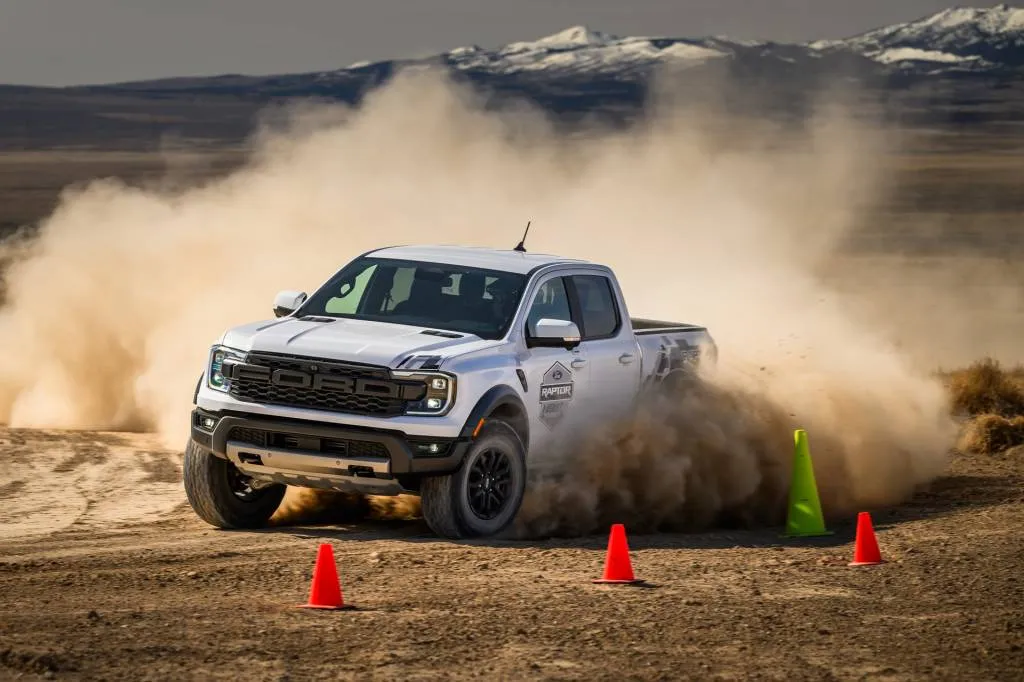Ford is working on position-sensitive dampers to make off-roaders like the Bronco Raptor even better, a new patent filing shows.
The patent filing in question was published by the United States Patent and Trademark Office (USPTO) on May 16, after being filed by Ford earlier in the year. And it describes updated position-sensitive dampers suited for high-speed off-roading.
Position-sensitive damping alters damper behavior for different driving scenarios. They may use one damping curve for normal driving and another for when a vehicle encounters a jump, which requires stiffer damping to prevent the vehicle from bottoming out. They're already used in the F-150 Raptor, and the aforementioned Bronco Raptor uses semi-active dampers based on a variant of this concept.
In the document, Ford notes that when driving over a series of whoops, the continuous cycle of compression and rebound may cause conventional dampers to achieve resonance, an unpleasant sensation that will force drivers to slow down or endure a lot of vibration.

Ford Ranger Raptor Assault School
To help cancel this out, Ford's design relies on a secondary damper, essentially an area blocked off by an additional piston, creating a separate zone with different characteristics than the main body of the damper. This provides another tool for reducing resonance and keeping the tires in contact with the terrain more consistently.
Position-sensitive damping is already used in off-road racing and in the Multimatic Dynamic Suspensions Spool Valve (DSSV) dampers used in the Chevrolet Colorado ZR2 and other General Motors off-road trucks.
Multimatic also has a relationship with Ford. It built the GT supercar and led development of the Mustang GT3 race car and its GTD track-car counterpart. But the company's off-road suspension tech hasn't been applied to any Fords so far.